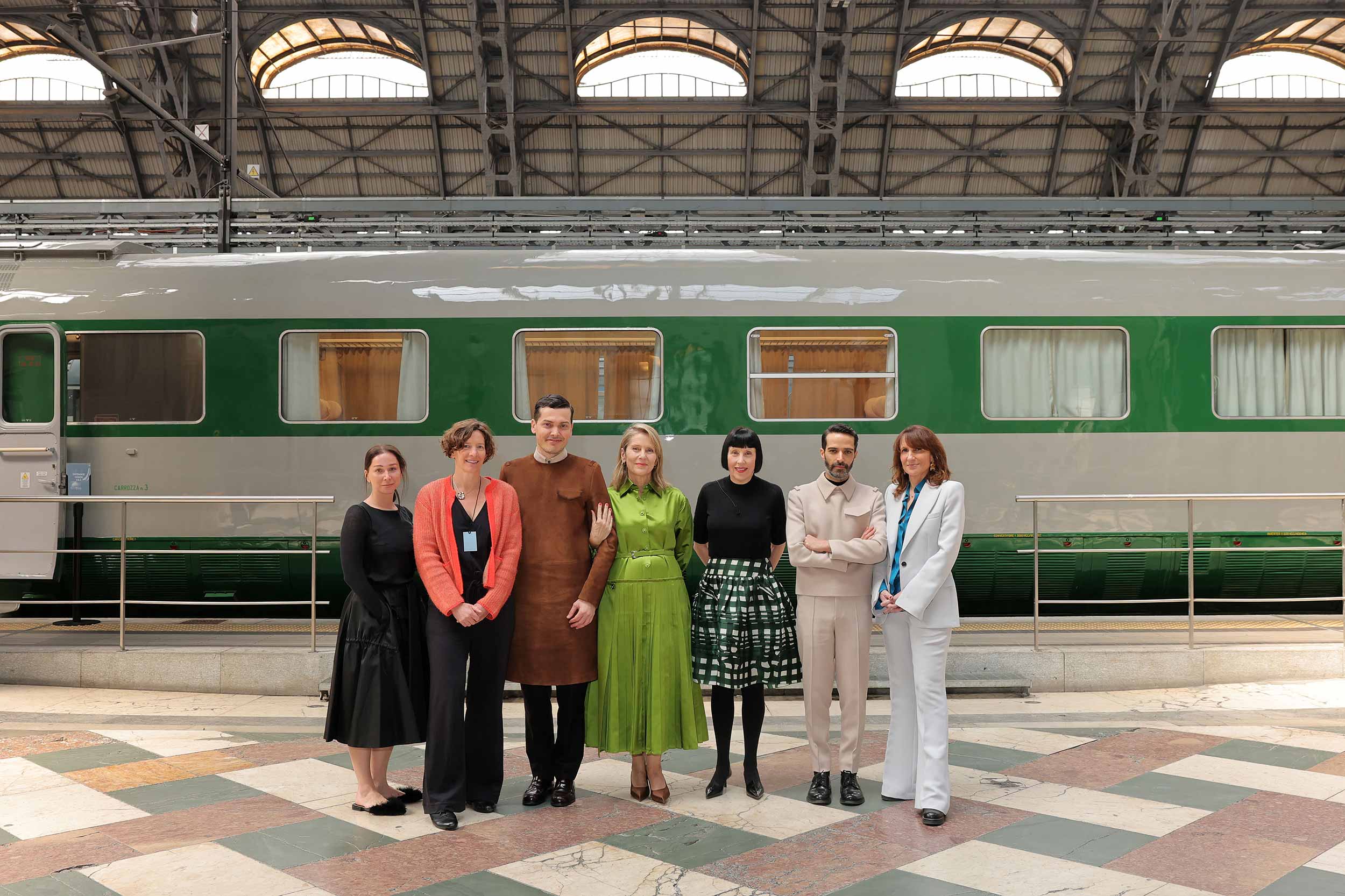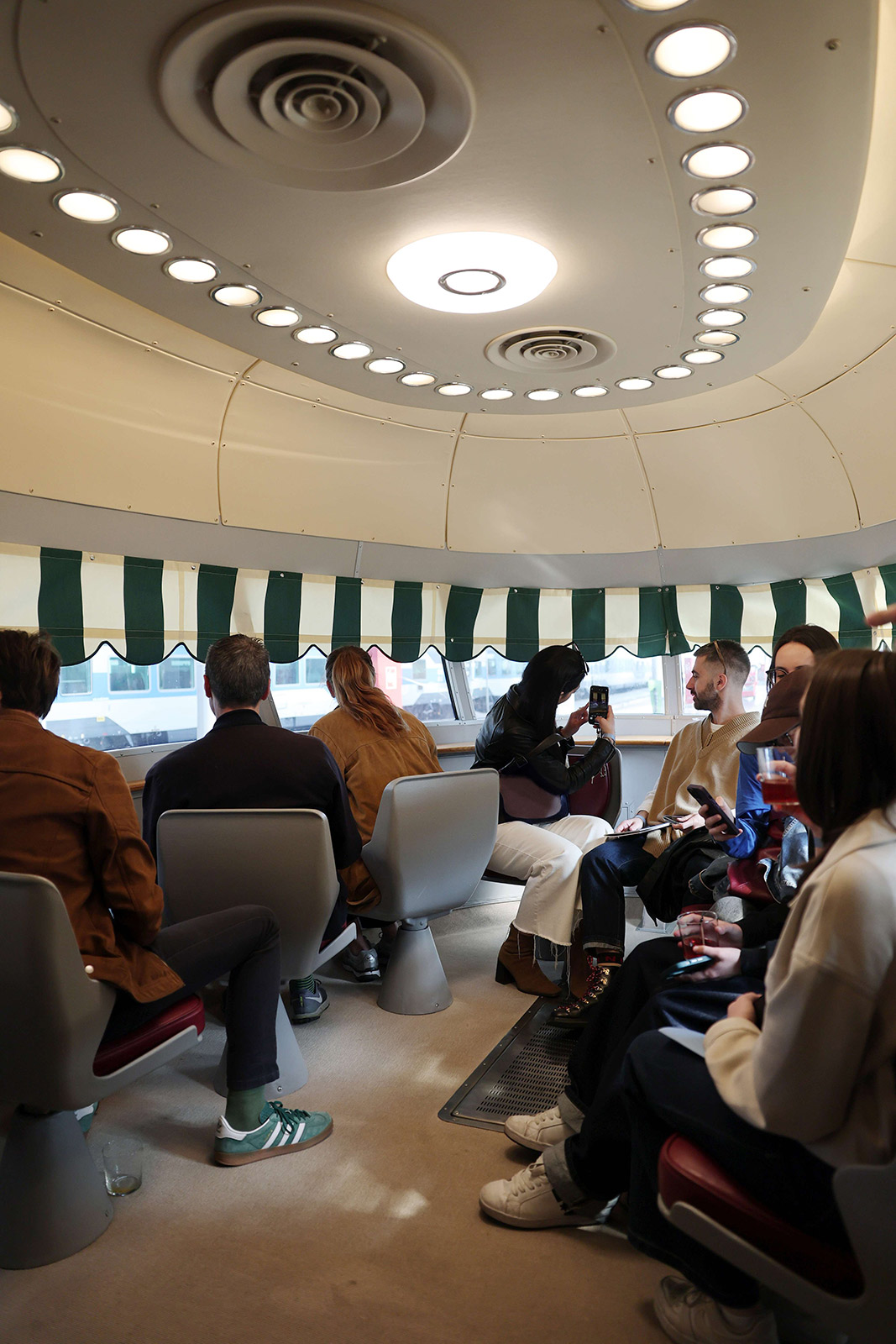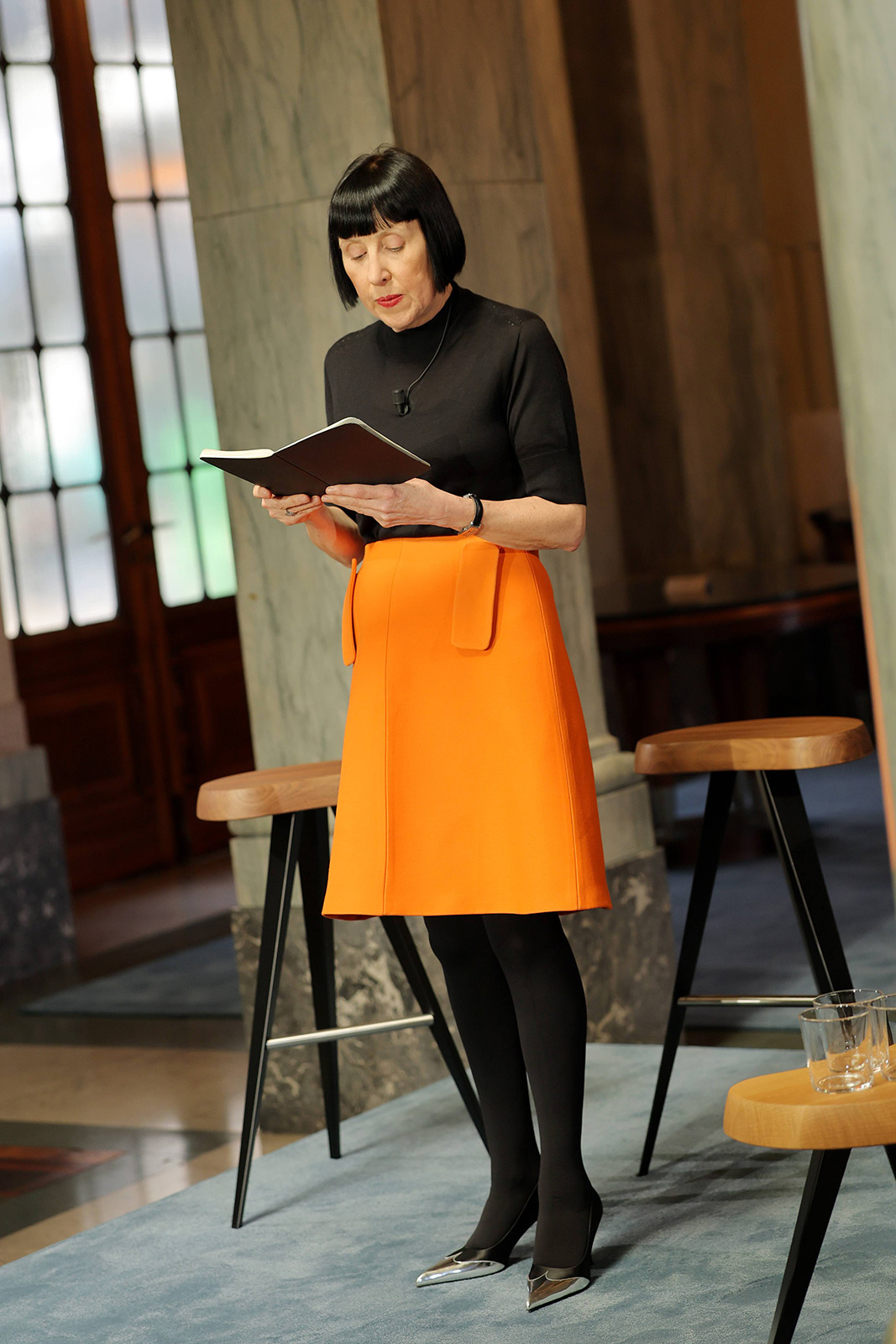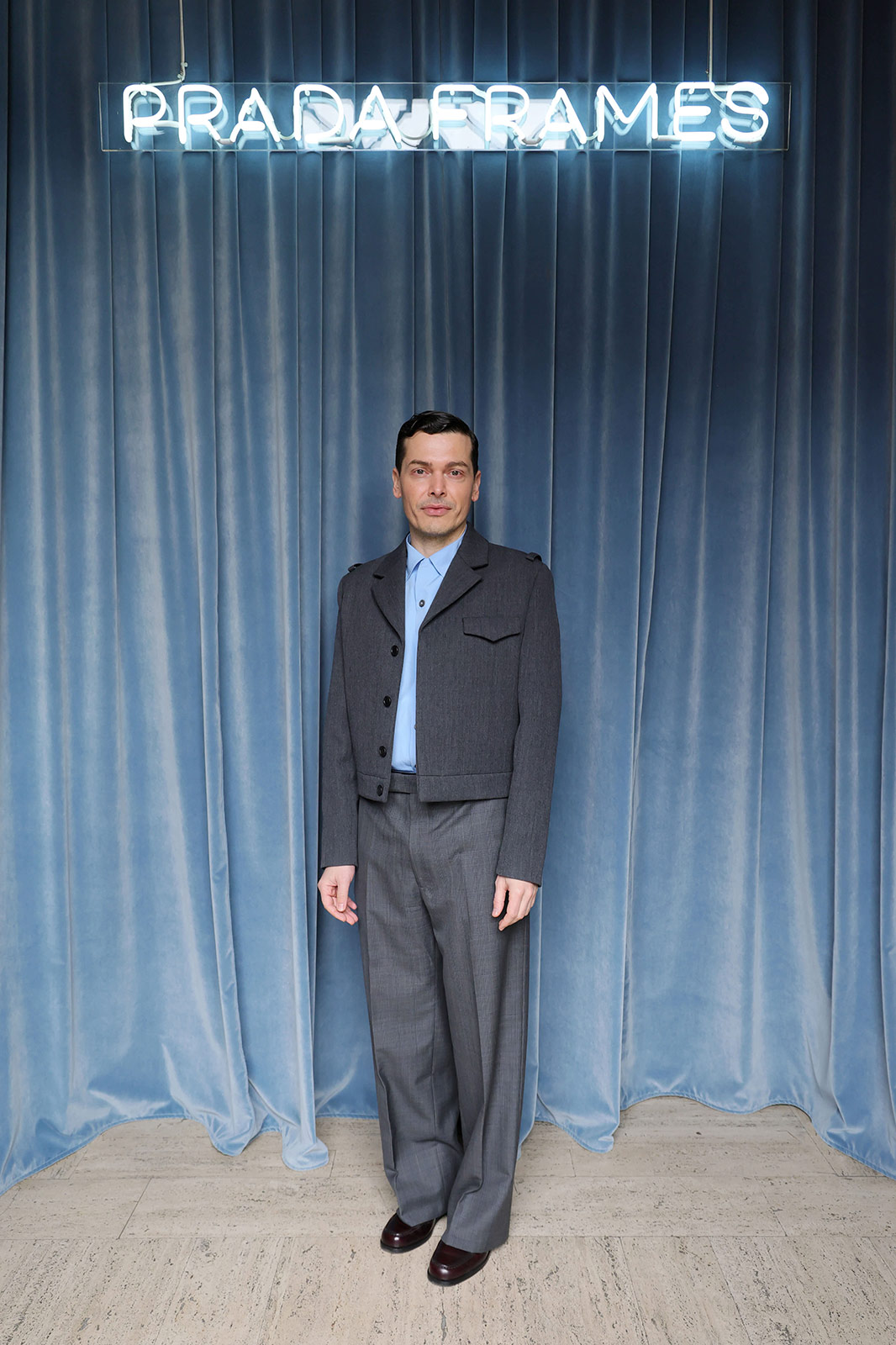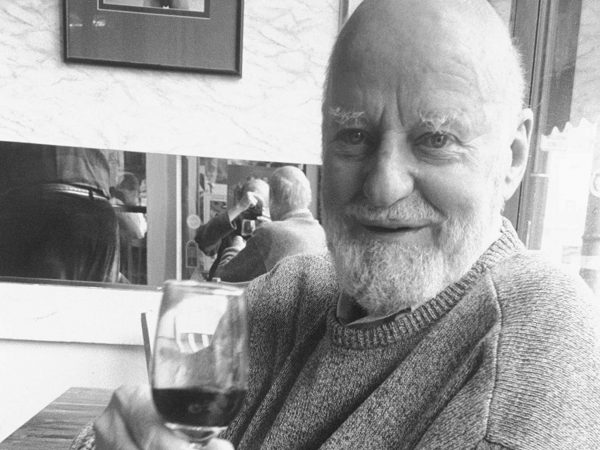Held at Milan Central Train Station and a restored 1950s train originally designed by Gio Ponti, Prada Frames 2025 brought together designers, policymakers, and researchers to imagine the future of mobility
Amidst the bustle of Salone del Mobile, more casually known as Milan Design Week, Prada Frames returned with its fourth iteration, titled In Transit. Curated by Andrea Trimarchi and Simone Farresin of research-based design studio FormaFantasma, the annual symposium organized discussions that expand our understanding of design’s capabilities in the realms of mobility and transportation systems. The program was aptly hosted at the Milan Central Train Station, an immersive liminal space dedicated to mobility, and aboard the restored legendary 1950s Arlecchino train, originally designed by Gio Ponti and Giulio Minoletti. In the Padiglione Reale, a historical landmark formerly used as the station’s royal waiting room, attendees gathered over the course of three days for fifteen dialogues from designers, researchers, policymakers, and more. With design at the helm of conversation, the discourse highlighted how the complexities of migration, information systems, and the infrastructures that supply us with necessities are woven together. Over three days, fifteen dialogues featured designers, researchers, and policymakers examining transportation’s multifaceted impact: from personal mobility and information systems to ecological consequences.
Though Prada Frames 2025 has passed, the conversations it started continue. For Document Journal, in a conversation moderated by Katie Rex, Farresin reconvenes with two of the program’s key participants: acclaimed design critic Alice Rawsthorn, who contextualized each of the symposiums conversations, and Marta Foresti, founder of LAGO-Collective and a leader in policy development and research of mobility systems, who participated in the symposium’s discussion on“Infrastructures of Migration”.
Katie Rex: What were the curatorial motives behind this year’s Prada Frames?
Simone Farresin: Since Prada Frames was established, the aim has always been to offer a platform that could allow the observation from a multidisciplinary approach of subjects and dynamics that are already part of the design world that tend to be invisible. They don’t only belong to the design world, but to contemporary life. Each year we increase the scale of observation. This year, we looked at the subjects of mobility and infrastructure; people, data, information and so on. The main idea was to closely observe the conditions that allow the events that are happening in the city and to understand how these are shaping our life, economies, and the movement of people. This was the principle from which we started.
Alice Rawsthorn: I think it’s interesting to point out that although forums like this are held in different contexts to coincide with different events in other sectors, for Milan Design Week, this was completely new. It was always a splashy show stopping event, but there was very little critical discourse or reflection on design during it, and the response has been fantastic. Andrea and Simone very smartly identified a yearning from participants at Milan Design Week to be able to engage in discussions like this. People have responded with such enthusiasm, it’s already had a positive impact on other Design Week activities which similarly are now discussing design within a critical framework, which they didn’t do before.
Marta Foresti: From somebody that does not come from the design community, I want to emphasize how significant it is to create a space where we can engage with complex ideas that require new thinking. To have created this space during a week that’s more restrictively focused on what we mean by design, this provides a very unique opportunity for the community of people that work on sustainability and other policy relevant issues to come together. There is such a need and desire, a certain hunger.
Katie: And what do you feel were the key markers in shaping the discourse around infrastructure and mobility in relation to design?
Simone: There were very different perspectives. Many of the contributions looked at the relationship between the consumption of resources and new forms of infrastructure. So for instance, multiple speakers addressed how the expansion of AI is requiring enormous quantities of energy. Not only through new forms of infrastructure, data centers, and enormous objects for computation that require energy, but also that use existing forms of infrastructure. Many of the contributions addressed the ecological crisis.
Alice: It was also interesting that although technology and applying advances in technology in a positive and productive way to tackle infrastructure issues, needing to make the most of them in the future was one of the key issues to be discussed. Another was looking at the growing interest in applying ancient and indigenous design systems to address many of these issues, the ecological challenges that we face. Speakers like Julia Watson, who wrote the Lo—TEK book and is about to publish her second book, Lo—TEK Water, gave fascinating insights into how these ancient and indigenous systems are now being used on the huge scale we need if we’re going to make a meaningful impact in addressing complex challenges.
Katie: When considering global development and migration, how do you think mobility is seen through the lens of ethical design practices?
Marta: There are a number of angles to this and they’re not exclusive to the conversation around mobility. They apply to what we just heard about infrastructure, which is the most useful way in which Prada Frames addresses the issues of design. You don’t take for granted that there is an inherent goodness or usefulness in the concept of design, and sometimes it’s the presence, or absence, of design that can make a difference in relation to various phenomena like infrastructure, technology and mobility. When it comes to the movement of people, the most traditional way to think about design and ethical, or rather unethical design, relates to the physical infrastructure that facilitates or limits the movement of people. There’s a very long tradition of thinking around the borders, fences and walls that are a subject of design. Sometimes a rather unethical design to prevent the movement of people. There’s a strong emphasis and interest around technology and the design of the governance systems around the movement of people. Including the role that technology and the increasing use of AI will play, particularly in the automation of decision making or identification of people who move. Very significant ethical questions that also reflect broader concerns around the use of AI and when it comes to people who move, and particularly people who are perceived of moving irregularly or illegally. There are even lower bars when it comes to data protection and the treatment of personal data.
What’s very interesting is the idea of design thinking, or the lack of it. The lack of intentional design that is behind some of the less visible barriers to the movement of people, and specifically the mental barriers that mean we differentiate between who is wanted and who is not. What I often say is, what is “us” on this side of the border? What is “them” on the other side of the border? What characterizes them? Typically it’s skin color, religion, and levels of poverty in the countries of origin. I use an example of work that looks at the data that we now have of short term visa applications and rejections, which are short and harmless movement of people for short trips where people cannot make it as a result of visa inequality and regimes. The data shows that the system highly and disproportionately affects applicants from African countries, and Asia, particularly South Asia. Nobody has ever sat down to devise a policy that will make it so that people from Africa will get short term visas to come from Milan Design Week is an unintended effect of a highly toxic and polarized debate around borders, migrants, and movement. This is a good example of where a certain lack of intentional design creates a system that harms everyone. The fundamental problem with unharmful forms of movement is that everybody loses out, not only those who cannot make it, but also the receiving end. This is where a continent like Europe is struggling to attract the very talent that it needs to attract in the future.
Everybody in the policy world talks about how design thinking is the new thing they’re trying to get familiar with.
Simone: Probably not many designers are involved in design thinking.
Marta: Yes, exactly.
Katie: Do you see symposiums like this to be evolving as platforms that could shape policy beyond cultural conversation?
Simone: I don’t think it has that potential, but what this symposium could become is a real educational model. The starting point when discussing Prada Frames, was the intention of offering an event directly linked to education during Salone del Mobile. There have been conversations about making an educational series for students, but we quickly realized that we all need different forms of education. We never start and we never stop learning, so the project was formalized in a symposium. The potential of what this program is trying to do is not to change policy making, but rather inform citizens on multiple levels.
Alice: I think one of the major outcomes of Prada Frames is that it’s important to bear in mind that none of the talks are very long. They’re typically 15 or 20 minutes each, so that’s obviously the disadvantage of that. You can have a wonderful speaker with so much to say, and they can only really give the headlines or the bullet points of the issues they want to explore. But, the benefit of that is that it’s an opportunity for people to hear different perspectives. They will give a singular, idiosyncratic but meaningful perspective on their chosen subject. It’s an introduction to those subjects, and it’s an invitation to explore and research more should you wish to. I think for students in particular, it’s a wonderful opportunity to see lots of important issues that could become increasingly important in the future, and that do address the complex challenges that faces and foregrounds the possibility of design being a strategic tool in developing solutions.
Katie: Considering the multidisciplinary nature of the participants of the symposium, what are designers’ responsibilities when mediating between areas of expertise?
Simone: For me, it‘s to acknowledge that as designers, we’re not placing ourselves in the position of the others. We’re there to respect the knowledge and lived experience of other individuals. We’re not here saying that a designer can be taking care of governance. What we’re saying is that if we are almost symbolically in charge of shaping a world, we need to be extremely aware of how this world is constructed and the politics that governs it. So being in conversation with others is a necessity to be more informed about our decisions. What we’ve seen in our practice is that designers tend to be a bit more agile in understanding how to also translate complex knowledge to other people. During Prada Frames, Paola Antonelli addressed information design, in that case the designer says the possibility of explaining complex subjects and passes it on to others. This has a huge urgency, because we’ve seen how the scientific community struggles with addressing and communicating the climate crisis. When we’ve reached out to scientists that work in university and research in various fields, they’ve always been thrilled to be in conversation with designers. They’re aware that this could be a space, not only for designers to translate knowledge and make it more available, but for the same people that work in academia to use the free space or tools of design. We’re very grateful that the scientific method requires a specific system when scientists publish papers, it cannot express opinions. This collaboration and joining of forces can allow designers to become more informed and at the service of translating complex knowledge using ways that are much more readable. But also, to make available some of the tools of design and the freedom that there is in disciplines that tend to be a bit more insular and not very free in elaborating their thinking.
Alice: I agree completely, and I think that the same principles apply much more broadly to many other spheres.
If you look at social design projects, Hilary Cottam is one of the pioneers in this field, and didn’t train in design at all. She started Social Sciences and only discovered design when she was working for the World Bank on water projects in Southern Africa. She realized that the success and failures of these projects varied enormously, so sensibly, tried to work out what the factors were. Much to her surprise, she found that the quality of their design was the key factor in determining how successful they’d be or how disastrous they’d be, and quite how much money was wasted. When she returned to the UK, she set up a social enterprise with the aim of redesigning different areas of social services. She assembled cross disciplinary teams of experts from very diverse, but always relevant, fields. She always made a designer the project leader, she believed that they have instinctive skills that weren’t sort of consciously taught to them at design school. She felt designers are better at eliciting the truth, particularly from members of the public who aren’t necessarily used to being questioned about what they think of the social services that are provided to them, and actually have very useful information to relay about it and very creative ideas as to what should be done as a substitute, but don’t necessarily see themselves as delivering them. She also feels that these communication skills help designers to raise funding from corporates, philanthropists, non-profit trusts and foundations, public money and so on. So not only would she have a designer as the project leader, they would adhere to the traditional design process, and use design language throughout.
Marta: There are a couple of reasons why I engage so much with design and with designers. One is fairly well known, design fundamentally addresses problem solving. Finding solutions to existing problems that require new forms of thinking, typically through the ability to bring together people from different disciplines that can address and look at the problem from different perspectives. The fact that design can help provide new knowledge and insights, from a researcher‘s perspective, new analysis effectively has an epistemological dimension and is something that is often misunderstood. Apart from a few examples, certainly social scientists are yet to discover the potential and the power of this. Prada Frames is an example where those people can come together.
Simone: I’m thinking again of what the main role of events like Prada Frames are. One of the main objectives is presenting design based on a slightly different narrative of how it‘s understood by people that are less familiar with the discipline of design. If we’re all here advocating for a more multidisciplinary approach to problem solving, we also need to develop more sophisticated narratives in the way we describe the discipline we work with. We often encounter people that tend to observe or to understand design in superficial ways. All of these cliches that we have to fight for are extremely important to be removed or challenged, otherwise this conversation that we are all advocating for will never happen in a sophisticated way. It’s extremely important that we also accept that we all come with different packages of knowledge that are equally important and vital. I think this is something that we are trying to really foster within Frames and Salone del Mobile, which is the event that really is marketing what design is to the world, offering a more sophisticated, complex understanding of the discipline, so that this conversation we’re having today can continue to exist in more and more sophisticated ways.


